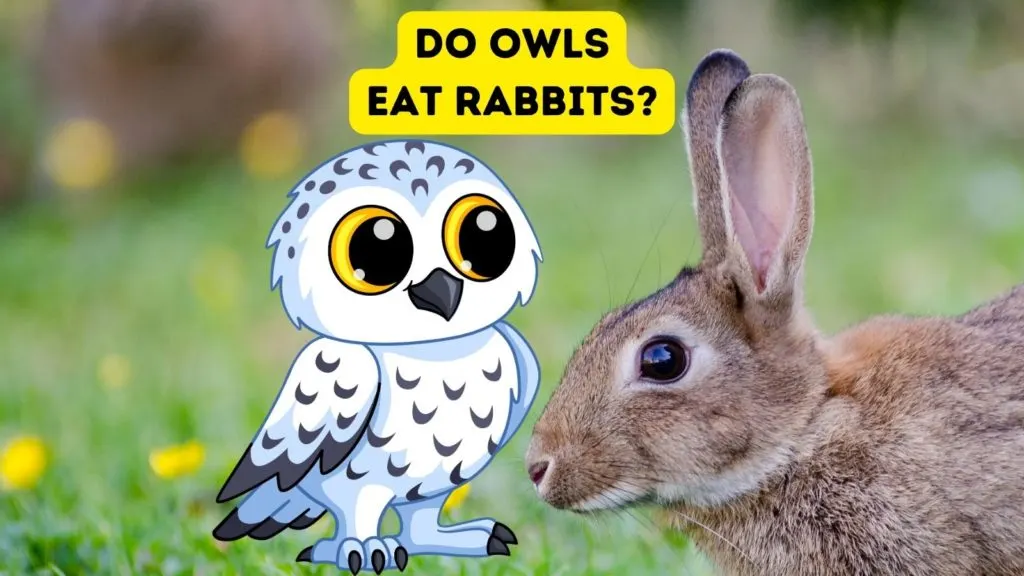Owls, as skilled and adaptable birds of prey, are known for their diverse diet, which often includes small mammals. A common question is whether they eat rabbits, and the answer is yes. Many owl species do prey on rabbits as part of their diet.

Which Owls Eat Rabbits?
Several owl species are known to include rabbits in their diet:
- Great Horned Owl – One of the primary rabbit predators. Powerful enough to take full-grown rabbits.
- Barn Owl – Opportunistic hunter that commonly eats rabbits (and rodents), especially young ones.
- Long-eared Owl – Specialized ground hunter of rabbits at dawn/dusk. Rabbits are a staple food.
- Short-eared Owl – Another ground owl that feeds heavily on rabbits during population peaks.
- Great Gray Owl – Found in northern forests. Snowshoe hares are a dietary focus.
- Northern Hawk Owl – Lives in boreal forests where rabbits supplement diet.
- Burrowing Owl – Inhabits grasslands/deserts. May prey on rabbits near burrow colonies.
- Barred Owl – Known to occasionally take rabbits, especially young bunnies.
- Northern Saw-whet Owl – Small but feisty, will occasionally eat cottontails and other lagomorphs.
Which Owls Don’t Eat Rabbits?
In general, the smallest owl species that specialize in arboreal habitats or insect prey tend not to regularly incorporate rabbits into their diets due to size limitations or ecological niche. The larger owls are more likely rabbit predators. These small owls typically don’t count rabbit on their menus:
- Screech Owls – Small, arboreal owls that mostly eat insects, small birds and rodents.
- Eastern Screech Owl – Too small to regularly take rabbits. Focuses on insects and small mammals.
- Western Screech Owl – Same as above, specialized on smaller prey in trees.
- Northern Pygmy Owl – Tiny owl of woodlands, primarily eats insects and small birds.
- Flammulated Owl – Another small, insectivorous woodland owl.
- Burrowing Owl – May eat rabbits opportunistically near colonies but diet is mostly insects and small mammals.
- Elf Owl – Tiny owl of the desert southwest, specialized on large insects and small birds/mammals.
- Spotted Owl – Rarely preys on rabbits outside of mountain cottontails in limited parts of range.
How Do Owls Catch Rabbits
Rabbits are pretty fast–but they’re often not fast enough to evade owls on the hunt. Owls hunt rabbits in several different ways:
Ambush hunting – Some owls like long-eared and short-eared owls will sit very still on the ground and wait for rabbits to come within striking distance before launching a surprise attack.
Still-hunting – Owls may also hunt from low perches and scan the ground for any rabbit movement. When one is spotted, they swoop down silently for a capture.
Chasing – Larger owls like great horned may spot a rabbit from above and give chase by flying low to the ground. Their powerful talons allow them to grab a fleeing rabbit.
Flushing – Some owls like northern hawk owls may flush rabbits out of hiding by flying over brushy areas. Then they can catch the startled rabbit in the open.
Working as a team – In some cases, pairs of owls may hunt cooperatively by flushing rabbits towards each other.
Nocturnal hunting – Owl species are most active at night when rabbits are out feeding. This gives owls an advantage with their silent flight and night vision.
Element of surprise – Owls have extremely soft wing feathers that allow for stealthy flight–the rabbit never hears them coming. Rabbits are usually caught unaware before the owl strikes from above or behind.
Once caught, the rabbit is food for the owl or the owlets back in the nest. Feeding their chicks a diet of varied prey is crucial for their growth and development. The adult owls typically hunt and kill the prey, then tear it into smaller, manageable pieces to feed their chicks.
As the young owls grow, they learn to handle larger prey items, which prepares them for independent hunting.
Rabbits form a significant part of the diet for many owl species, especially those large enough to handle these relatively bigger mammals. Owls play an important role in controlling rabbit populations, maintaining the balance in their ecosystems. Observing the hunting habits and dietary preferences of owls offers a fascinating insight into the adaptability and survival skills of these remarkable birds of prey.
More Posts You Might Like
- 8 Letter Bird Names - August 14, 2024
- 7 Letter Bird Names - August 14, 2024
- 7 Birds Named After Famous People - July 23, 2024
